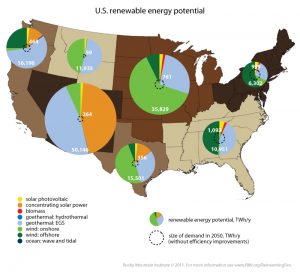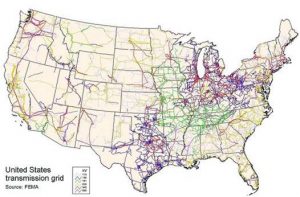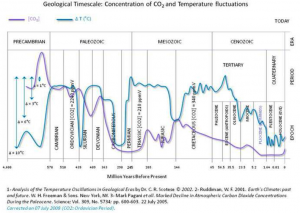audioEARTH, a podcast from the American Geosciences Institute – Greenhouse
audioEARTH, a podcast from the American Geosciences Institute
Listen now to Episode 6: “Greenhouse“
The word “greenhouse” brings to mind a few different ideas. Agriculture and growth, for starters. Protection from the cold, perhaps. Glass walls. Glass ceilings. Greenhouse also refers to a fundamental idea in climate science – the greenhouse effect. But did you know that the greenhouse effect was first discovered by a woman? In this episode we’re telling the story of this discovery by geoscientist Eunice Foote, and we’re talking with some of the people and organizations that are promoting women in the geosciences.
Guests are Mackenzie Cremeans, Ph.D. (Association of Women Geoscientists), Professor Collin Roesler, Ph.D. (Bowdoin College), and Heather Houlton (American Geosciences Institute).
This is the final episode of season 1! If you’ve enjoyed listening, please consider leaving a review on iTunes. It helps others find the show. Thanks!
audioEARTH connects Earth, science and people by sharing compelling audio stories about geoscience.
Suggested Reading:
Earth’s Magnetic Poles Swapping ??
“The Earth’s magnetic field” surrounds our planet like an invisible force field – protecting life from harmful solar radiation by deflecting charged particles away. Far from being constant, this field is continuously changing. Indeed, our planet’s history includes at least several hundred global magnetic reversals, where north and south magnetic poles swap places. So when’s the next one happening and how will it affect life on Earth?
During a reversal the magnetic field won’t be zero, but will assume a weaker and more complex form. It may fall to 10% of the present-day strength and have magnetic poles at the equator or even the simultaneous existence of multiple “north” and “south” magnetic poles.
Geomagnetic reversals occur a few times every million years on average. However, the interval between reversals is very irregular and can range up to tens of millions of years.
There can also be temporary and incomplete reversals, known as events and excursions, in which the magnetic poles move away from the geographic poles – perhaps even crossing the equator – before returning back to their original locations. The last full reversal, the Brunhes-Matuyama, occurred around 780,000 years ago. A temporary reversal, the Laschamp event, occurred around 41,000 years ago. It lasted less than 1,000 years with the actual change of polarity lasting around 250 years.
Power cut or mass extinction? (Read More)
For the climate group – “The difficulties of predicting the weather beyond a few days are widely known, despite us living within and directly observing the atmosphere. Yet predicting the Earth’s core is a far more difficult prospect, principally because it is buried beneath 3,000km of rock such that our observations are scant and indirect”
Training Profile – “Tracking Carbon“?
100% Renewable is the a Realistic Goal or a No Pipe Dream
100% Renewable is the a Realistic Goal or a No Pipe Dream
This is not a standard article but a look just specifically at the issue of energy. To set some basic ground rules we have to agree on some facts:
We are not in an energy crisis, we are in a crisis related to energy waste and poor and ineffective distribution and storage.
1. We waste over 58 % of the energy we use in the USA.
2. This energy waste is double what we actually need.
3. This annual energy waste, production, lack of use, distribution inefficiencies, and waste heat, in just one year in the USA could power the UK for 7 years.
4. We are leaving money on the table that could go economy and help our countries and others.
Inefficient Production
1. Wind and solar have low inefficiencies for energy production compared to other source. So they really only make sense NOW in specific corridors or regions. 
2. The primary problem is these regions are not were the core demand in the USA is located and we lack an energy distribution network. 
3. Inefficient distribution, production, and waste requires building multiple times demand capacity to meet peak demand. Because of the lack of solid storage systems, such as battery technology, inefficient distribution and production we need to overbuild to meet peak capacity if we rely sole on renewable. A thought process:
How to Get There !- 1 Quadrillion Btus per year = 2,739,730,000,000 BTUs/day
Solar (100 % Efficiency) – 433 Btu/hr per square foot
Available 24 hours per day
Need 6100 acres of Solar Panels
Wait – Solar-Assume Solar Efficiency Assume 10% (high) – Only Available about 8 hours per day
Need 182,000+ acres of Solar Panels, plus storage and duplicate capacity.
Wind- 25 % Conversion
Need about 270,000 10 MW Turbines, plus storage and duplicate capacity.
These analysis does not factor in transmission losses. If there was only a 10% loss and no other inefficiencies, we would multiple the calculated values by 1.1, but we have a use inefficiency of 58%. This means are multiplication factor is at least 1.9 to 2 +. So – 360,000 acres of solar panels and 540,000 10 MW turbines.
The goal for renewable should not be based on a Carbon or CO2 hammer and we must stop this myth of Man controlled climate. Climate on this Earth has not been constant, it is in dynamic equilibrium with Sun, Earth Process, and to a lesser extent life on Earth.
It is very likely man is having an influence on the climate, but this is not likely CO2 production but deforestation, building in the wrong places, heat island effects, and not adapting to our environment. As an alternative approach, we are suggesting the following:
- Fact based discussions about energy, economy, politics, and culture. We are humans so science (facts) and cultural discussions are linked, but we should not be using Fear as a rally cry.
- Concentration on energy waste reduction – individuals, homes, small business, and government.
- Distribution – We should focus on “hardening” the grid and creating capacity and duplicity were needed. We must start linking “renewable and other energy sources” and take advantage of the energy diversity in the USA.
- Storage – we must develop efficient storage technologies.
- The solution is not a CO2 hammer, electric cars, or a 100% renewable life cycle, but an all the above approach.
- Remember our beaches are moving, we live on a planet with the plates move and we have the Great Earth Engine. (Geothermal is a great asset for the USA).
- Energy and energy technology – we must not be hoarders, but exports of energy and energy technology and I do not mean low cost solar panels, but micro-grid energy systems that use multiple fuel stocks that can power rural villages and towns and not a Carbon Tax.
- If we cut our waste, we cut CO2 emissions. This makes the CO2 emissions benchmark useless and to be honest the arguments based on climate change and CO2 are weak.
- Stop the 100 % renewable myth (all the above approach).
I have never recommended a book to read – this is the first, but I strongly recommend “Scare Pollution“, 2016.
I also like “Human Caused Global Warming“, but I really wish the author hired and used an editor.
“Unsettled: What Climate Science Tells Us, What It Doesn’t, and Why It Matters”
I really enjoyed – “Global Warming-Alarmists, Skeptics and Deniers: A Geoscientist Looks at the Science of Climate Change“
Forestry Training and Tree Planting Grants in Pennsylvania PA Department of Conservation and Natural Resources.
TreeVitalize state-wide 2017 grant applications available
The Pennsylvania Urban & Community Forestry Council has secured funding for tree planting grants and innovative projects grants throughout the state through our partnership with the PA Department of Conservation and Natural Resources.
Tree planting grants will be available to Pennsylvania municipalities and non-profit agencies throughout the state for projects related to tree plantings with a strong volunteer base. Applicants are required to have the assistance of their local service forester and/or Penn State extension forester in developing a planting plan. Interested applicants should begin by contacting their local DCNR service forester or Penn State Extension Forester and include them in any conversations concerning proposed tree plantings. Those foresters can provide necessary guidance pertaining to grant opportunities as well as native species and sustainable projects. Applications are due September 30, 2016. Notifications will be posted by November 1st with grant terms to include January 1, 2017 – December 31, 2017.
For more information, or for a copy of the grant application, please contact Jessica Cavey, Development and Grants Coordinator, at (717) 599-8650 or c-jcavey@pa.gov.
Tree Tenders on-site classes
Join thousands of other concerned citizens like yourself. Become a Tree Tender and help increase tree canopy cover in your community. Tree Tenders® is a training program that empowers concerned residents to make dramatic strides towards restoring and caring for the tree canopy in their communities. The course is designed for lay people and experts alike. Become one of the Tree Tenders restoring and tending your part of the forest. Instruction is provided by DCNR’s Bureau of Forestry, in partnership with Penn State Extension, PHS, and other local urban forestry experts.
Tree Tenders training includes: Tree Biology, Urban Stresses on Trees, Tree Identification,Tree Pruning and Root Care, Tree Planting Techniques, Community Organizing
Upcoming classes offered by Pennsylvania Horticultural Society:
September 21, 28, and October 5 – Philadelphia, PA – 5:45 PM to 9 PM
September 22, 29, and October 6 – New Hope, PA – 5:45 PM to 9 PM
September 28 and October 5 and 19 – Haverford, PA – 5:45 PM to 9 PM
Register online at http://phsonline.org/programs/tree-tenders
Stay tuned for next month’s email for dates and locations of other Tree Tenders classes around Pennsylvania this fall.
Managing Invasive Plants
August 19, 2016, 8:30 AM to 3 PM
Williamsport, PA
Invasive weeds and pests are a major threat to our natural and cultivated landscapes, spreading quickly and displacing or killing native plants. The Managing Invasive Plants program will provide participants with the knowledge and skills to properly identify invasive plants and develop strategies for treatment and control. Topics discussed will include invasive species identification, invasive plant control, and herbicide application methods, equipment, and safety. A morning classroom session will be followed by an afternoon field demonstration.
PDA pesticide applicators update credits will be offered: Category 05 (4 credits), Category 06 (4 credits), Category 10 (4 credits), Category 23 (4 credits), Core (4 Credits)
ost: $35
Online registration is available at http://extension.psu.edu/invasive-plants
For more information, contact Vincent Cotrone at (570) 825-1701 or vjc1@psu.edu.
2016 Tree Canopy Conference: Preserving Trees in Our Communities
October 13, 2016, 9 AM to 5 PM
Haverford College, Stokes Hall Auditorium
Why is Tree Canopy So Important? A healthy tree canopy provides important ecosystem services including air pollution removal, storm water runoff reduction, and energy conservation. Tree canopy provides habitat for wildlife, and also has a positive impact on human wellbeing, community cohesion, and economic stimuli. In this conference, we will look at tree canopy preservation and reduction, and consider some of the greatest threats communities are facing as they try to preserve canopy cover.
Featured Speakers:
- Joseph Townsend, University of Delaware – The important benefits of trees in the urban environment
- Jason Henning, USDA Forest Service – Computerized tools, like iTree, to measure canopy cover
- Scott Wade, Longwood Gardens – Pennsylvania Champion Trees
Cost: $125 (includes lunch and break refreshments)
Continuing Education Units: This conference carries CEUs for ISA certified arborists and PA landscape architects.
Register online at https://online.morrisarboretum.org/canopy
For more information or to register by phone, call the Morris Arboretum Education Department at (215) 247-5777.
This conference sponsored by Morris Arboretum School of Arboriculture and Haverford College Arboretum. Co- Sponsored by John E. Ward & Company Tree Experts.
| Brian Wolyniak
Extension Urban Forester Email: bjw229@psu.edu (412) 482-3455 The Penn State Center – Pittsburgh Extension and Outreach 1435 Bedford Avenue, Suite A Pittsburgh, PA 15219 |
Julianne Schieffer
Extension Urban Forester Email: jxs51@psu.edu (610) 489-4315 Penn State Ecosystem Science & Management 1015 Bridge Rd Collegeville PA 19426 |
More Training Courses in Water Resources and Ecology.
